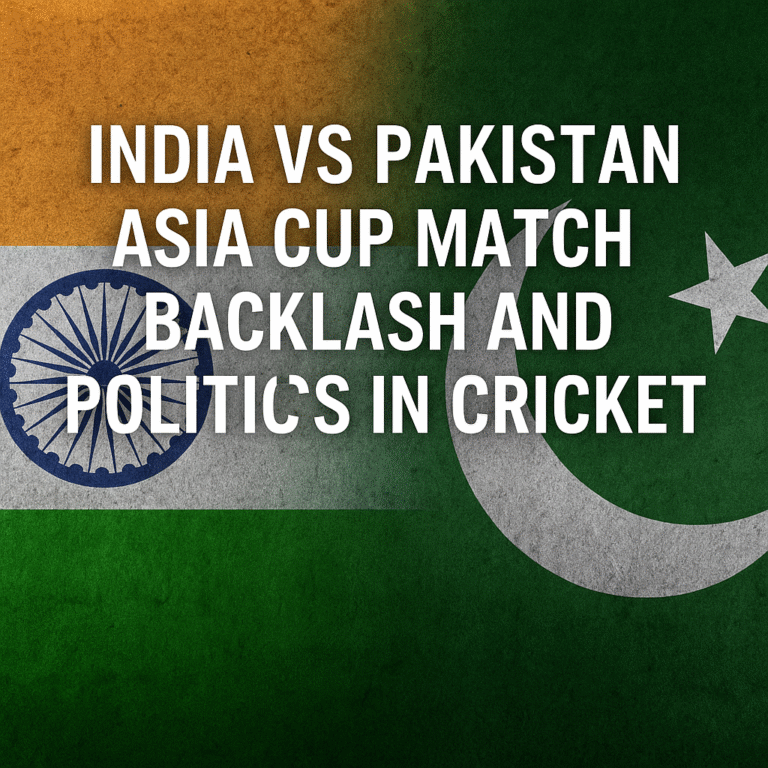How Franchise Cricket Impact is Reshaping Global Cricket
Franchise Cricket Impact is changing the face of global cricket. Over the past two decades, cricket has seen a meteoric rise in popularity of franchise T20 and short-format leagues, drawing audiences that rival or even eclipse international contests. But this surge comes with costs: as the leagues grow, the prominence and competitive spirit of international matches, especially in white-ball cricket, seem to be fading.
The Rise of Franchise Leagues: A Timeline
The Twenty20 format, first introduced at the international level in 2005, quickly proved to be a commercial goldmine. By the late 2000s, cricket boards and investors recognized the potential of city- or region-based franchise leagues.
Today, the five most popular franchise leagues globally (by viewership and brand value) are:
- Indian Premier League (IPL) – India – Estimated global viewership: 500+ million per season.
- Big Bash League (BBL) – Australia – ~50 million viewers.
- Pakistan Super League (PSL) – Pakistan – ~150 million viewers.
- Caribbean Premier League (CPL) – West Indies – ~36 million viewers.
- The Hundred – England – ~16 million viewers (still growing).
These leagues have massive followings, sell-out stadiums, and attract international stars from every corner of the cricketing world. The brand values, media rights deals, and sponsorship revenue rival or surpass even some ICC tournaments in financial impact.
International Cricket vs Franchise Viewership
While ICC tournaments like the Cricket World Cup or T20 World Cup still command significant global attention, especially marquee clashes like India vs Pakistan, but bilateral international series are struggling to match the hype and numbers generated by franchise cricket.
The pattern is stark: a random mid-series ODI between two nations may barely draw a fraction of the audience that a high-profile IPL or BBL match does. This has led to concerns that fans are losing interest in traditional white-ball international cricket unless the stakes are very high.
Downsides of Franchise Cricket
Declining Importance of International White-Ball Cricket
The frequent availability of high-quality cricket through leagues has somewhat diluted the excitement for bilateral ODI and T20 series. Fans now often see these matches as less important, except when they’re part of ICC events.
Loss of Competitive Edge
In the past, white-ball series between strong cricketing nations carried significant prestige. Triangular and quadrangular series provided regular, high-stakes competition. With such tournaments now rare, teams are missing opportunities to test themselves in varied formats and conditions outside of franchise setups.
Player Availability Issues
Players, especially from financially struggling boards, may prioritize lucrative franchise contracts over national fixtures. This is particularly visible in the West Indies, where several star players skip tours to play in leagues.
Impact on Smaller Cricket Nations
When star players choose franchise cricket over internationals, smaller cricket nations lose valuable role models and crowd-pullers, weakening domestic support and development.
West Indies: A powerhouse in earlier decades, failed to qualify for the 2023 ODI World Cup, marking the first time in their history they missed out on this tournament.
Sri Lanka: Once frequent finalists, had to play qualifiers to play the group stage of the 2021 Men’s T20 World Cup
Positives of Franchise Cricket Impact
Massive Boost in Cricket’s Popularity
Franchise leagues have brought cricket to newer audiences, particularly in regions and demographics that weren’t traditionally engaged. The marketing, celebrity endorsements, and entertainment value have helped the sport grow globally.
Financial Security for Players
Players who may not have long international careers still have opportunities to earn well through franchise contracts, ensuring they can focus on the sport without financial distractions.
Exposure to Different Conditions and Cultures
Young and emerging players get to share dressing rooms with legends, play in varied conditions, and experience high-pressure situations, all valuable learning experiences that can benefit their international careers.
Stadium Atmosphere and Viewer Engagement
Franchise games often see packed stands, vibrant crowds, and electrifying atmospheres. This contrasts with many bilateral series, which sometimes struggle to fill stadiums.
Test Cricket – The Exception
Interestingly, Test cricket has managed to hold its own, or even improve, in certain respects over the last 15 years. Iconic series like The Ashes, India’s tours to Australia, and England’s visits to India still attract huge attention and maintain their prestige. In fact, many argue that with the decline of bilateral white-ball cricket, Test cricket has become the true measure of a team’s strength.
The Balanced View
Franchise cricket is not inherently “killing” international cricket—but it is forcing the game to evolve. The challenge for cricket boards is to find the right balance. ICC tournaments still prove that there’s a huge appetite for international cricket when the stakes are high. The real problem lies in the bilateral structure and scheduling, which must be made more relevant and competitive to keep pace with the franchise boom.
In conclusion, the statement “franchise cricket killing international cricket” may be an oversimplification. Instead, franchise cricket has disrupted the traditional structure, pushing the sport toward a more entertainment-driven model. If cricketing authorities can innovate international formats, restore prestige to bilateral series, and ensure fair scheduling, both forms can thrive side by side, benefiting players, fans, and the sport as a whole.





